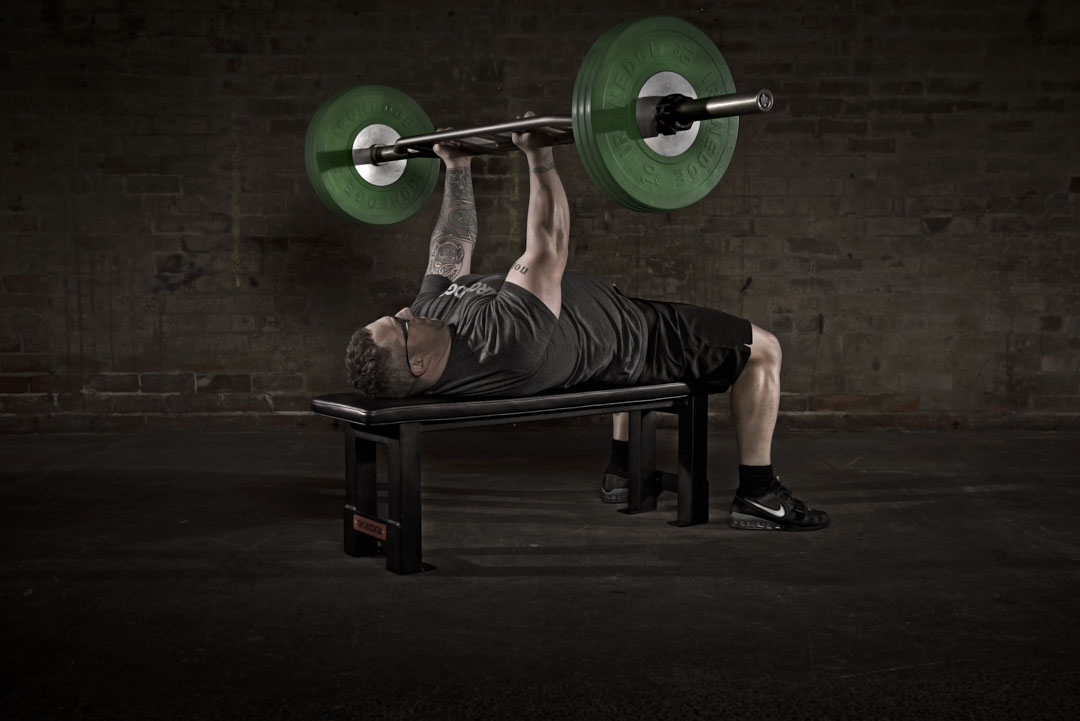Lifting for Shoulder Health

The most commonly injured joint in the gym is the shoulder.
When people think of a ball and socket joint, the first visual teaching aid
used in classrooms around the world is a fist fitting into the opposite hand.
Thing is, with the shoulder this is more like a golf ball in a tee. It’s
incredibly mobile but this comes at the expense of stability. This is why
shoulder dislocations are a relatively common injury, especially when compared
to a hip dislocation.
There are three main factors for the prevention of injury to any joint: mobility, stability, and strength. Most athletes make the mistake of focusing on a joint’s strength before mobility and stability, the result being a joint which is strong in a limited/dysfunctional pattern. Put simply, high demand on a poorly functioning joint is bad.

Mobility is a joint’s ability to move. Too much mobility and the joint is loose and susceptible to dislocations and tears. Not enough mobility leads to dysfunction which can affect other joints which move more as compensation, and an inability to reach ideal positioning. For example, a swimmer may not get full reach which would limit their speed; or an athlete throwing a ball may have impaired mechanics.
Stability is a joint’s ability to resist movement.
Thanks to the everyday fitness community at large, people’s first thought for
stability will be using a Bosu ball or some fiddly “core” balance exercise.
When it comes to the shoulder, stability refers to the humerus remaining snugly
fit in the joint (and not dislocating/sublaxating) and being secure at the end
of range of motion.

Strength is a joint’s ability to produce movement (note the distinction from stability). Think shoulder presses and lateral raises. When an injured athlete (or even an athlete with some underlying dysfunction) attempts to get the joint stronger without addressing mobility or stability, the joint becomes good at moving in a limited fashion. Don’t exceed the

How to Improve Mobility
When recovering from a significant injury, obviously consult
a medical professional first. Depending on the severity, you may start off with
building up your passive range of motion. Using a partner and letting your arm
completely relax, your arm will be guided through a pain free range of motion.
This can be done by yourself if you have access to a large ruler, dowel or
similar object.
The next step is building your active range of motion
through a pain free range of motion, such as performing shoulder circles (the
size and speed of which will vary depending on the condition of your shoulder).
For healthy shoulders requiring a significant amount of mobility, using a dowel
and raising your arms above and over your head to your lower back (sometimes
colloquially referred to as shoulder dislocations, but which do not dislocate
your shoulder [for this reason this is not a good name]); narrowing your hands
to increase the difficulty. Performing overhead squats or similar snatch
position movements will also get the shoulders used to operating at the ends of
their range of motion (for healthy lifters).

Improving Stability
For those in poor health, performing isometric external and
internal rotations will place an easily adjustable tension on the shoulder
without any movement. This can be done by standing next to a wall, keeping your
elbow tucked into your side and pushing the back of your hand into the wall. A
pole or corner will be required to perform internal rotation using this
technique. Adjust position to target different fibres and angles.
The next progression would be to perform rotator cuff movements using a band or very light dumbbell. Bands tend to be preferred in order to quickly change the resistance as required, and the ease in changing angle as the joint requires (pain free movement is the key). Single arm exercises such as dumbbell chest presses or shoulder taps (from a push up position) are also good choices for developing better proprioception and stability. Keeping the arm tucked in (such as pressing with a neutral grip) will place the shoulder in a more stable position, something to keep in mind with those recovering from an acute injury or managing a chronic one.
Improving Strength
Once the shoulder has complete (or at least sufficient) pain free range of motion, and is not at risk of further damage, the surrounding muscles can be strengthened using all manner of presses, pulls and raises. The shoulders are integral to upper body movement, so you will find that almost any upper body exercise will engage them to some degree. Overhead presses, dips and face pulls are excellent choices for building strength in this area.